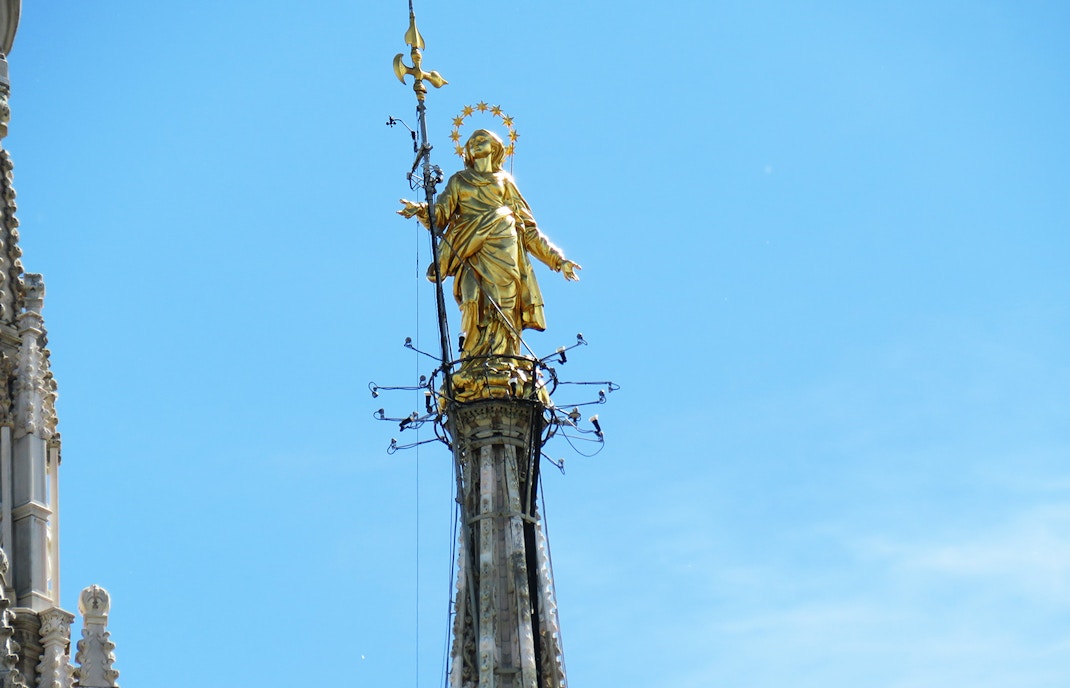Location: Duomo Cathedral Milan
Designer: Giuseppe Perego
Construction Start Date: 1769
Completion Date: 1773
Erected In: 1774
Materials Used: Iron, Copper, Steel, and Gold
Height: 4.16 m
Number of gold sheets used in gilding: 6750
Madonnina | Quick Facts











